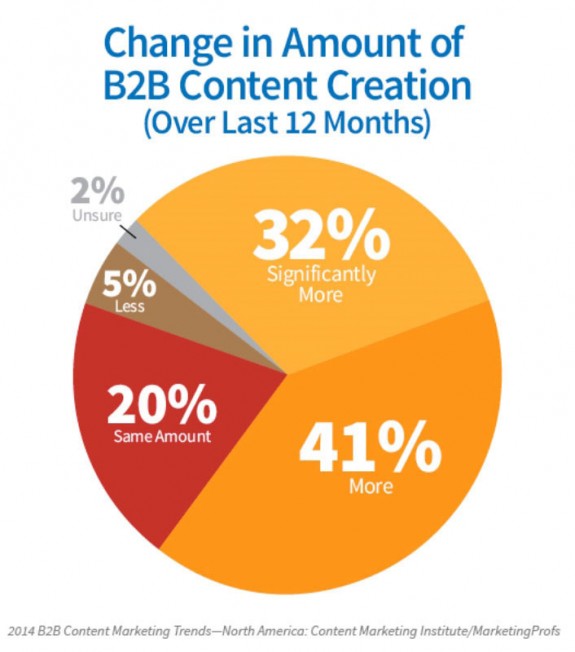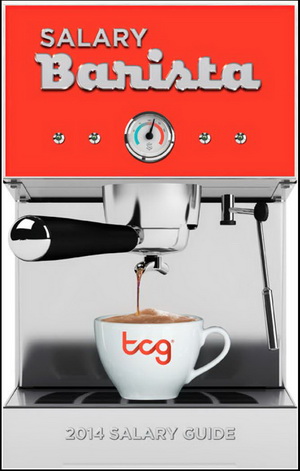When you are new to freelancing, setting up a system to manage projects and finances doesn’t seem as urgent as getting your marketing efforts in gear. But if your marketing efforts generate a flood of new projects and inquiries, you may wish you had spent more time establishing a business-management workflow. It is definitely advantageous to have some sort of accounting system in place when prepare your estimated tax payments each quarter.
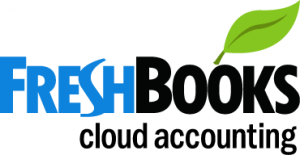 Two options that can help freelancers, home-based businesses, entrepreneurs, and other very-small businesses better manage their projects, invoices, and finances are FreshBooks and Sage One.
Two options that can help freelancers, home-based businesses, entrepreneurs, and other very-small businesses better manage their projects, invoices, and finances are FreshBooks and Sage One.
I haven’t fully investigated all features. But I am providing some initial impressions here so you can determine if either option fits your business, budget, and long-term goals.
 FreshBooks and Sage One are both cloud-based services that are provided on a subscription basis. Both are designed for use by people without accounting backgrounds or a lot of spare time to learn complex software. Both services enable you to do such things as send invoices customized with your branding, track overdue invoices, and import expenses from banks and credit-card accounts.
FreshBooks and Sage One are both cloud-based services that are provided on a subscription basis. Both are designed for use by people without accounting backgrounds or a lot of spare time to learn complex software. Both services enable you to do such things as send invoices customized with your branding, track overdue invoices, and import expenses from banks and credit-card accounts.
While FreshBooks already has apps available for iOS and Android devices, both services will eventually enable you to access your accounts from laptops, PCs, smartphones, and tablets. Subscribers will automatically get new features as the companies continue to refine their software.
The major differences between the two products come from their roots. FreshBooks, which was launched as a brand-new product in 2004, has a super-friendly interface that clearly reflects the design-firm experience of one of its founders. Sage One, which was launched in the U.S. in May, 2012, is the “very-small-business” edition of a family of accounting and business-management software for small to mid-sized businesses.. The Sage One service has an interface that means business. The smart dashboard gives you an at-a-glance picture of your income and expenses, account balances, and unpaid invoices.
Both FreshBooks and Sage One can help you be more productive and efficient in managing your time, projects, and money. They both can deliver the type of data you need to figure out whether you are just super-busy or super-busy and profitable.
FreshBooks
 FreshBooks promotes itself as the “No. 1 cloud-based accounting solution designed exclusively for small business owners.” The company was founded in 2004 by a design-firm owner who wanted easy-to-use tools for time-tracking, invoicing, and expense management. FresBooks has been used by 5 million people in 120 countries.
FreshBooks promotes itself as the “No. 1 cloud-based accounting solution designed exclusively for small business owners.” The company was founded in 2004 by a design-firm owner who wanted easy-to-use tools for time-tracking, invoicing, and expense management. FresBooks has been used by 5 million people in 120 countries.
I started using FreshBooks last fall for time tracking and and sending invoices. I first learned about FreshBooks when company co-founder Mike McDerment gave a presentation at the 2011 International Freelancer Day conference about how, when and why to hire your first employee.
One way to determine when it’s time to hire some help is to track how you are spending your own time each day.
When you audit your day and see how you actually spend your time, you will inevitably find certain tasks that you just aren’t good at, said McDerment. As a solopreneur, you may find yourself spending very little time on your core competency (design, writing, photography) because so much of your time is consumed with administrative paperwork.
When you devote too many hours to tasks that are inefficient and distracting, you have fewer hours to focus on doing billable work–the type of work you most enjoy.
Time-tracking also matters to creative pros because we tend to be perfectionists by nature. Or, when we work on particularly engaging projects, we tend to get “in the flow” and lose track of time entirely. Either way, we often spend far more time on flat-fee projects than we originally estimated. As a creative pro who has worked with lots of other creative pros, the founder of FreshBooks seems to instinctively understand this.
The time-tracking feature of FreshBooks has helped me understand why perfectionist tendencies can put my ability to earn a living as a solopreneur at risk. Getting sidetracked by projects that fascinate me robs me of time that could be more productively spent on networking, marketing, or working on other assignments.
The time-tracker has helped me produce more realistic estimates and avoid unprofitable, flat-fee projects that might consume more time than they are worth. Time-tracking also helps me see how much time I am actually spending writing each day.
Another feature that attracted me to FreshBooks was the ability to send invoices in whatever form the client preferred. I can send invoices electronically, email them as PDF attachments to personalized cover letters, or send invoices via old-fashioned snail mail. No matter what form I choose, all of the invoices are tracked from a single point.
FreshBook offers the ability to:
- Quickly create professional-looking estimates that can later be turned into invoices
- Track hours spent by project, task, and team member
- Set different hourly rates for different types of tasks
- Automatically send monthly invoices to clients who pay on retainer
- Set up online payments through PayPal or 13 other payment gateways
- Track offline payments
- Create team timesheets
- Track unbilled hours
The FreshBooks app on my iPhone and iPad lets me scan printed receipts for easy attachment to expense reports.
As your business (and client list) grows, FreshBooks can be integrated with related business-management software such as MailChimp (for newsletters and e-mail marketing), Salesforce (customer-relationship management), or Sage 50 accounting software for small businesses.
You can try FreshBooks for free if you fewer than 3 clients and don’t mind having the FreshBooks brand on your invoices. A “Seedling” subscription to FreshBooks costs $19.99 per month if you have up to 25 clients and a single administrator.You can upgrade to “Evergreen” ($29/month) and “Mighty Oak” ($39/month) plans with unlimited clients and the ability to manage team timesheets and team expense reports.
LINK
FreshBooks
Sage One
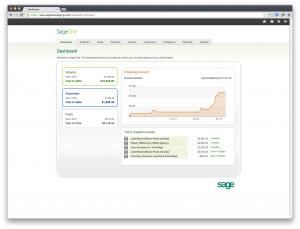 Sage One is designed to help all types of solo entrepreneurs, home-based businesses, and freelancers take control of their finances and manage day-to-day operations without letting time-sensitive tasks fall through the cracks.
Sage One is designed to help all types of solo entrepreneurs, home-based businesses, and freelancers take control of their finances and manage day-to-day operations without letting time-sensitive tasks fall through the cracks.
Sage One can help with money management, invoicing, project tracking, task assignment, messaging, and reporting. It can help alleviate problems caused by disorganized record-keeping and redundant and inconsistent data entry.
Sage North America introduced Sage One software to the U.S in May, 2012. It is specifically designed for owners of very small businesses (from 1 to 9 employees) and is part of a family of accounting products for businesses with up to 500 employees.
The Sage One product comes from The Sage Group plc, a long-time provider of the Peachtree accounting and business-management software for small to mid-sized companies. The Sage Group plc is a London-based company that has been in business since 1981. They have over 6 million customers in 24 countries. Sage North America is based in Irvine, California, serves more than 3.2 million customers.
Here are a few of the things Sage One can help you do related to invoicing and money management:.
- Accept online payments through Sage Payment Solutions or PayPal
- Categorize expenses using a customizable account list
- Generate small-business accounting reports (profit and loss ,balance sheet, aged invoices)
- Match and categorize recurring transactions
- Record income and expenses for accounts
- Review and resend unpaid invoices
To keep your daily work more organized, Sage One can help you
- Create and manage tasks for your team and customers
- Review due dates, estimates, and time
- Access files and emails in one place anywhere, anytime
- Keep files, messages, and correspondence organized for future reference
- Review and track team activities
A monthly subscription is regularly priced at $29 per month ($24 per month until August 31). Readers of Creatives at Work can take advantage of a special offer for $15 per month.
LINKS
Sage One
Discount Subscription Offer for Creatives at Work Readers
Preliminary Observations
If you decide to give Sage One a try, I would love to hear your thoughts about it. I have downloaded a trial version, but haven’t yet set it up. At first glance, SageOne looks more versatile and robust than FreshBooks. And I am aware that I could use SageOne in conunction with a standalone time-tracking app.
But I love having the time-tracker within FreshBooks. Alerts warn me whenever I am exceeding the amount of time I allocated for a specific project.
Neither FreshBooks or Sage One will eliminate the need for accountants (particularly as your business grows). But they can help reduce the amount of time you spend preparing to meet with your accountant. And your accountant will love it if you have all of your income and expense information organized and readily available.
In fact, my contacts at SageOne tell me that a Sage One Accountants Edition is planned for release later this year. This module (free for accountants) will enable your outside bookkeeper or accountant to log in securely and review your financial records on the Sage One cloud platform.
If you haven’t yet lined up an accountant for your business, the FreshBooks platform can help you find accountants in your area.
Setting up business-management software requires some time and effort, so choose wisely! Once you get a system set up for your clients and team members, you may be reluctant to switch.
Keep in mind that cloud-based software will continue to evolve. Developers of cloud-based software respond to requests from their users. So, once you get a system installed, you can always ask for new (or fewer) features.
 The number of B2B marketers using infographics jumped from 38 percent last year to 51 percent in this year.
The number of B2B marketers using infographics jumped from 38 percent last year to 51 percent in this year.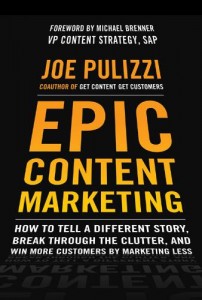 Content Marketing Institute is a content marketing education and training organization. CMI teaches enterprise brands how to attract and retain customers through compelling, multi-channel storytelling.
Content Marketing Institute is a content marketing education and training organization. CMI teaches enterprise brands how to attract and retain customers through compelling, multi-channel storytelling.
